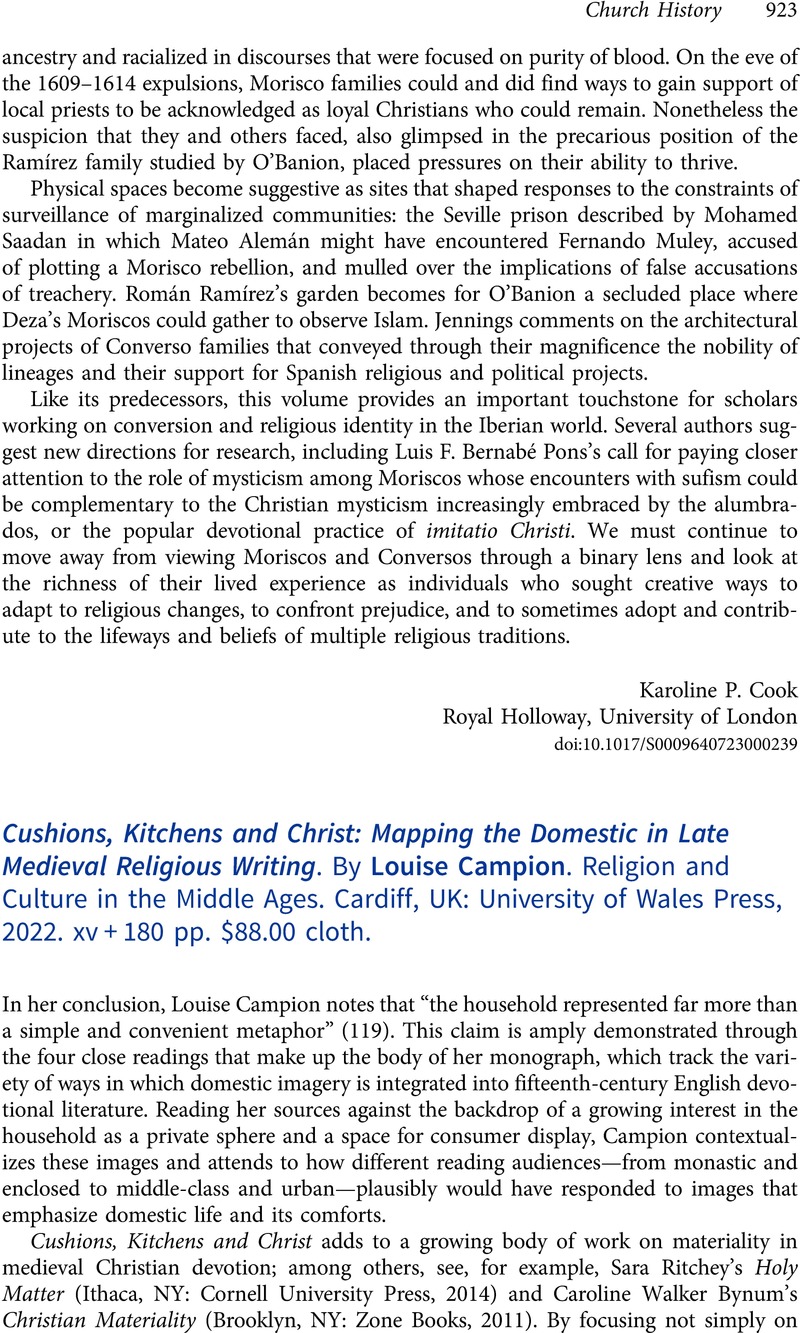No CrossRef data available.
Article contents
Cushions, Kitchens and Christ: Mapping the Domestic in Late Medieval Religious Writing. By Louise Campion. Religion and Culture in the Middle Ages. Cardiff, UK: University of Wales Press, 2022. xv + 180 pp. $88.00 cloth.
Review products
Cushions, Kitchens and Christ: Mapping the Domestic in Late Medieval Religious Writing. By Louise Campion. Religion and Culture in the Middle Ages. Cardiff, UK: University of Wales Press, 2022. xv + 180 pp. $88.00 cloth.
Published online by Cambridge University Press: 03 May 2023
Abstract
An abstract is not available for this content so a preview has been provided. Please use the Get access link above for information on how to access this content.

- Type
- Book Reviews and Notes
- Information
- Copyright
- Copyright © The Author(s), 2023. Published by Cambridge University Press on behalf of American Society of Church History


